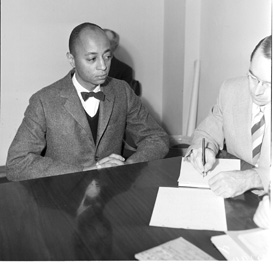I hardly ever go north, so let's celebrate Mosaic Monday in Canoga Park. Last year, the Orange Line Extension Station opened and the public got to see the two 27-foot long elliptical mosaics done by Ken Gonzales-Day, titled Western Imaginary.
Gonzales-Day is an Art Professor at Scripps College out in Claremont, not far from the University of California at Irvine, which is where he matriculated. Love using that work; it sounds like water falling over stones.
He's recognized internationally, and some of his projects tackle deep and controversial themes, like lynching. He actually created two art books that deal with that topic and what it says about society through the decades, Lynching in the West: 1850–1935 (a John Hope Franklin Center Book) and Profiled (LACMA PAC Prize, 2011)
. That got him interviewed on CNN--how many art professors can say that?
His shows, accolades, and projects are many, and he's relatively young. Read more about him at his website.
The pictures above hardly look like mosaics, right? So here's the close-up, just to prove that it is, in fact, a mosaic.
Probably a good time to mention that all the photographs here came from The Source, a Metro Ezine that puts up fabulous pictures and all the details of the artwork at Metro Stations and biographies of the artists who created them.
Also from The Source is the artist's statement about this piece(s):
"Inspired by the community's interest in drawing attention to the natural environment and combined with my own longstanding interest in both California history and native species, I decided to bring the natural environment into the station environment. I wanted to create artworks that would function on a number of levels and could respond to the specific needs of the site: one, to soften the stucco corridors and vast parking lots that surround it; two, to enhance the station itself; and three, I wanted to create something that would be a source of pride for local residents and of interest to those passing through."
The mosaics are of oak trees and manzanita, native to the Valley. They are accompanied by photographs on steel and enamel, up where you can see them and not embedded in the sidewalk, that show the surrounding hillsides in a nostalgic way. Westerns were filmed here up through 1960, apparently; probably a lot of them for Republic Pictures in Studio City.
A company called Perdomo fabricated the mosaics, then they were shipped and embedded in the concrete at the station, and you can see those processes at right and below. Perdomo, a family-owned firm based in Mexico, seems to be Metro's new fabricator. A couple of years ago it was Mosaica, located in Montreal, Canada.
From what I can tell, Perdomo is part of several companies making up Mosaicos Venecianos, a company founded in Cuernavaca in the 1950s by Manual Perdomo. They use the very old-fashioned methods of true craftsmen to create their smalti tiles and mosaics.






















